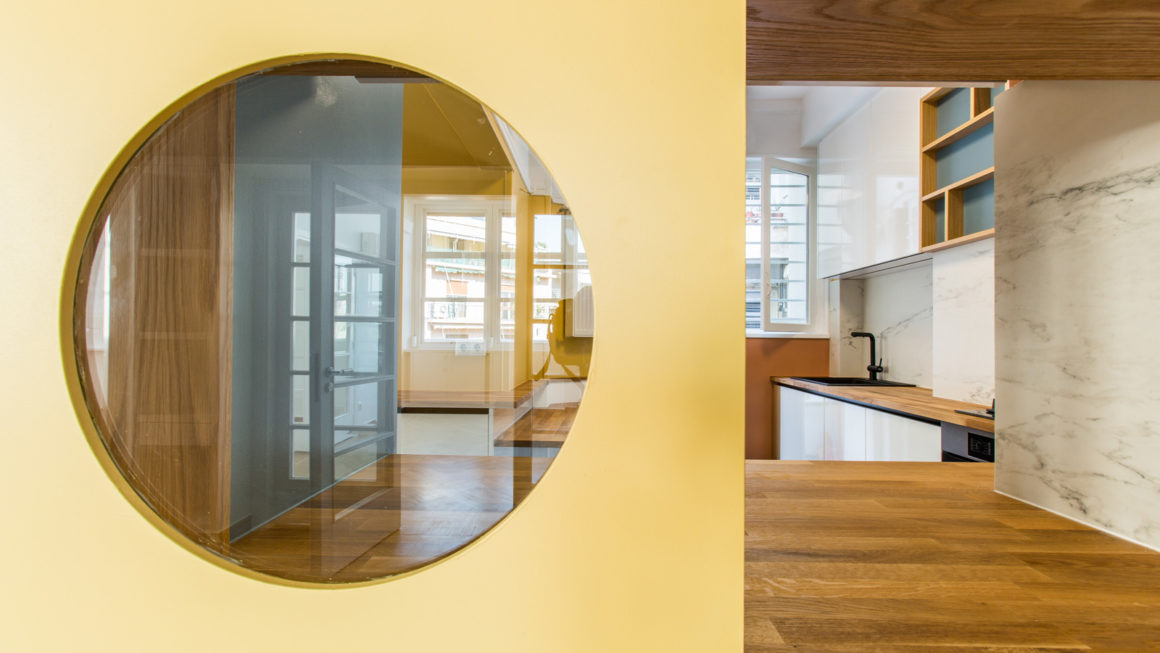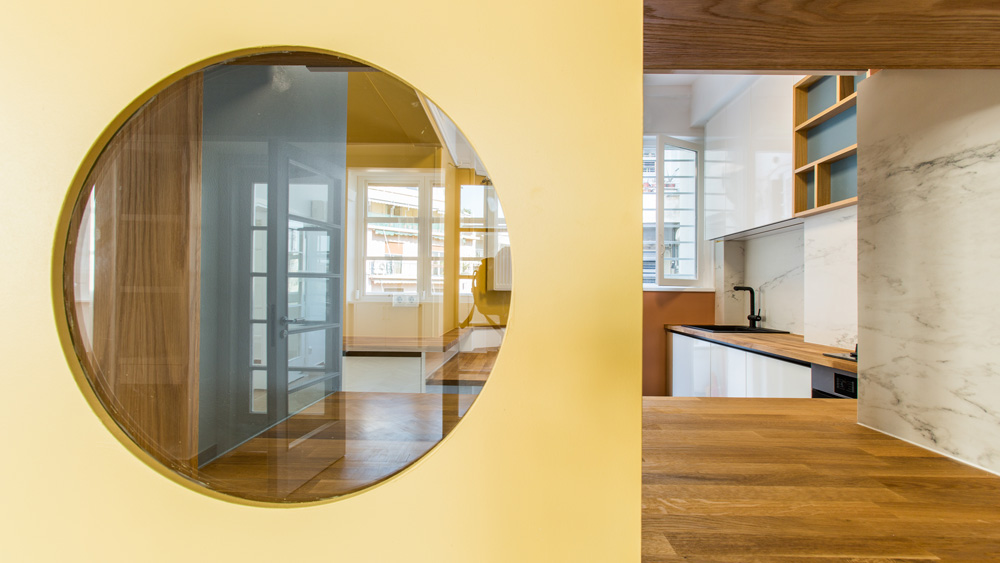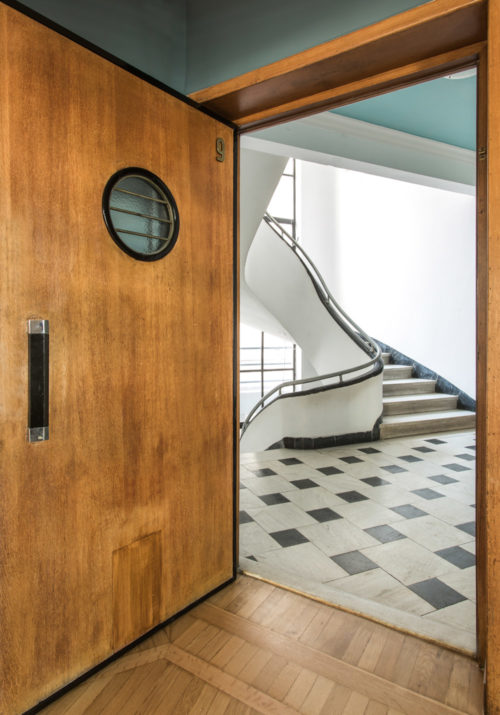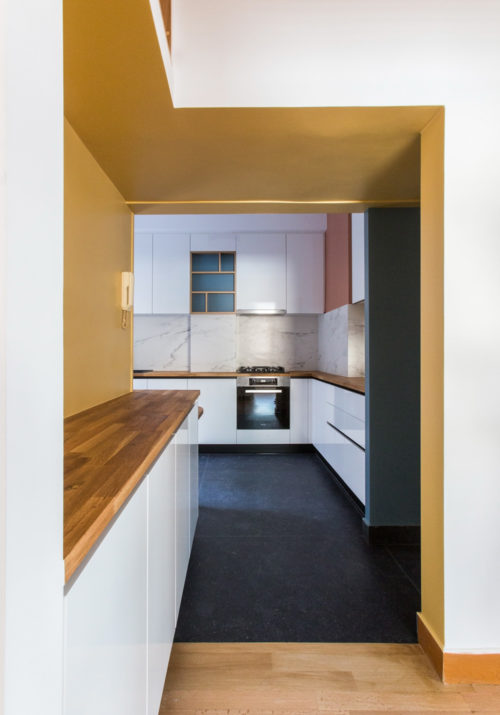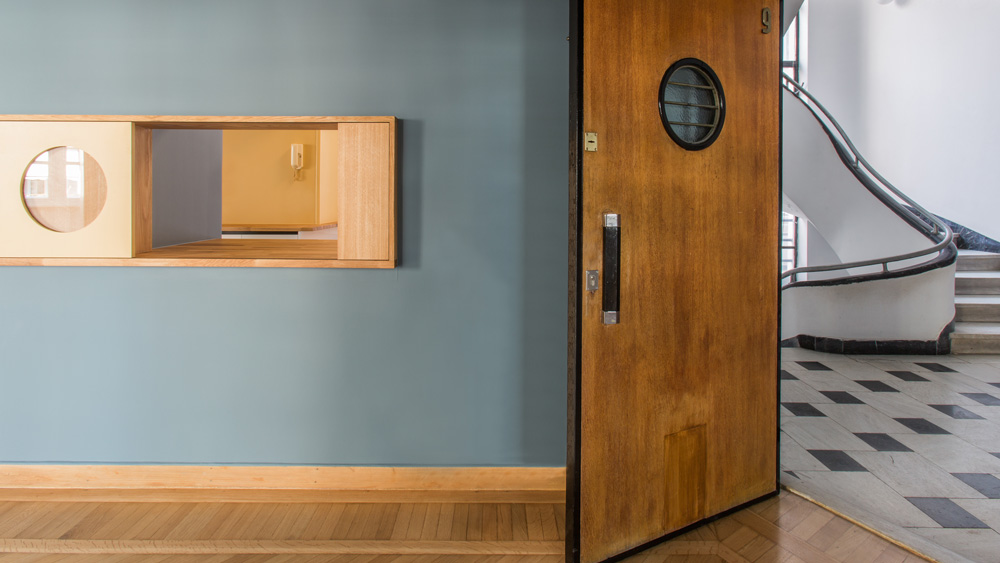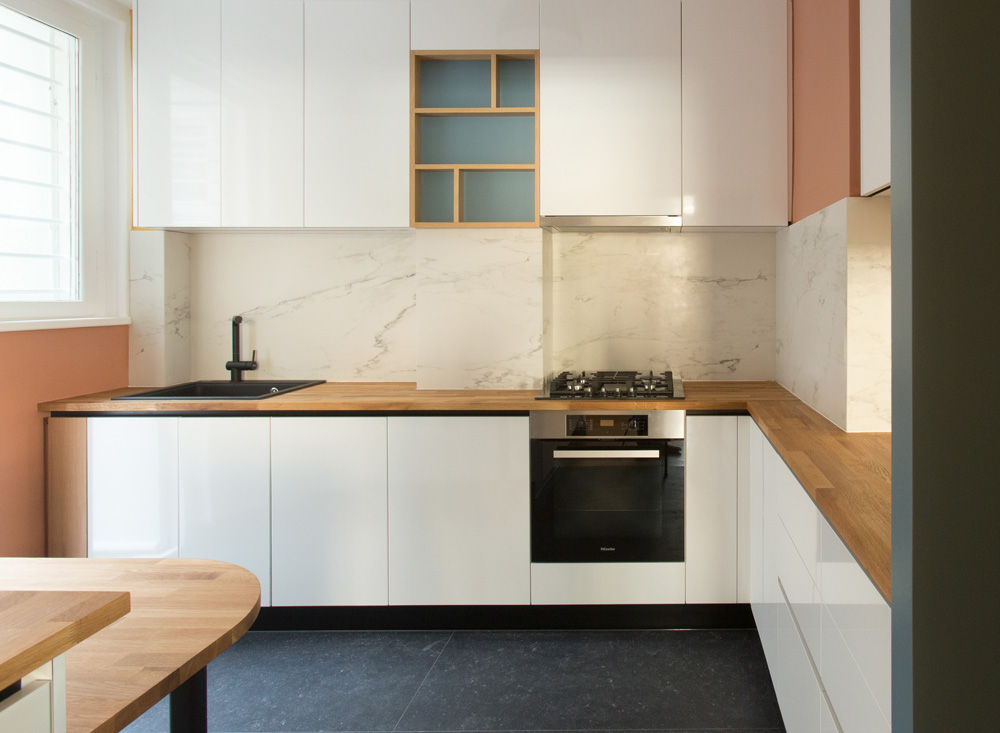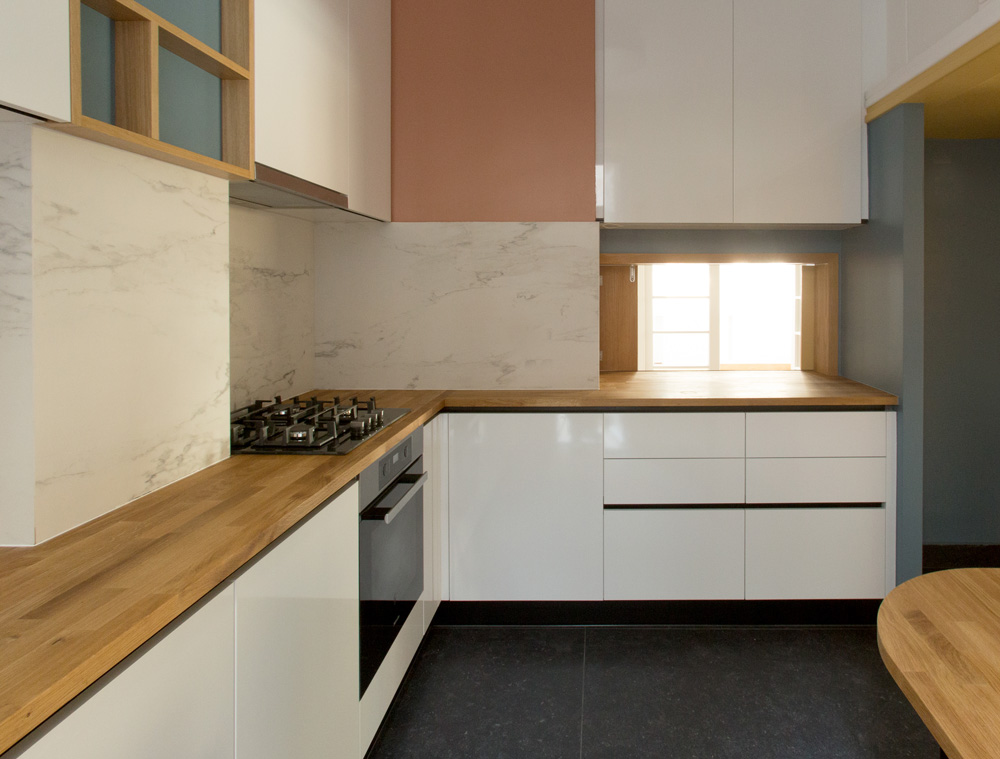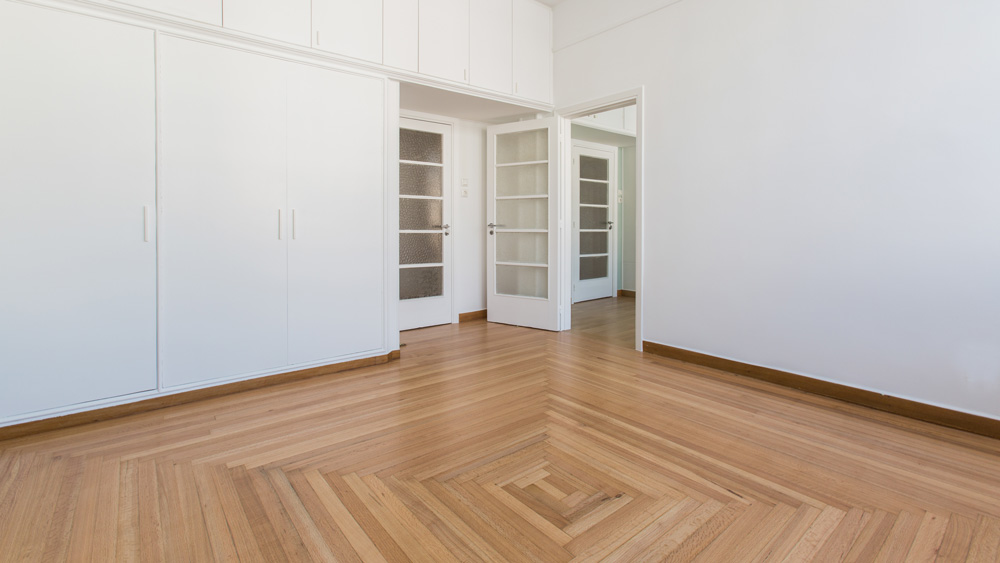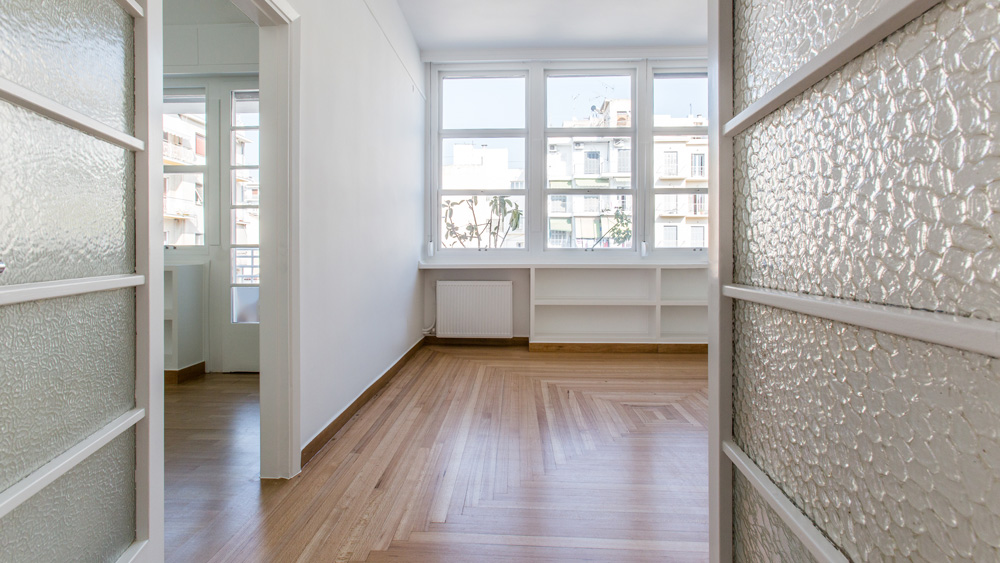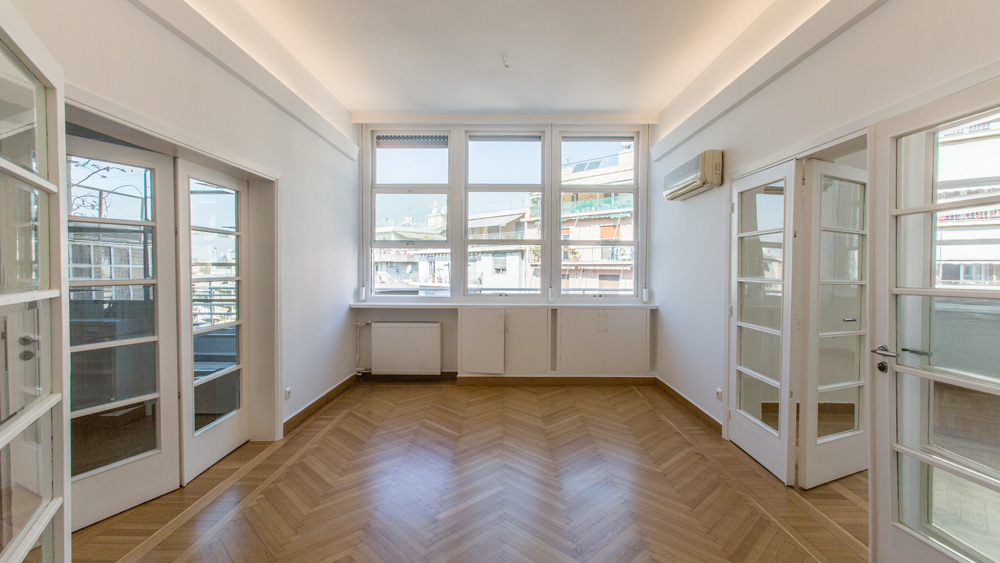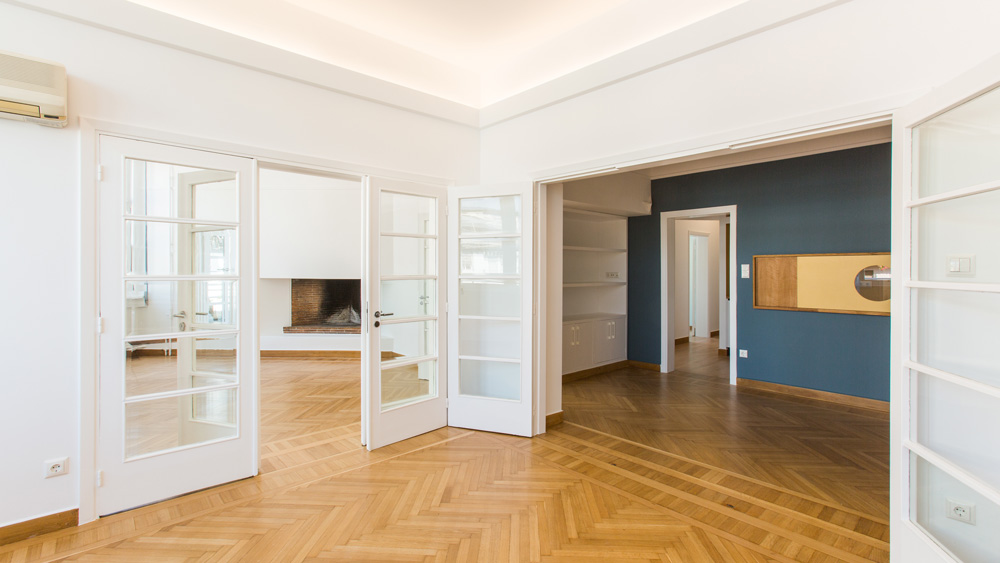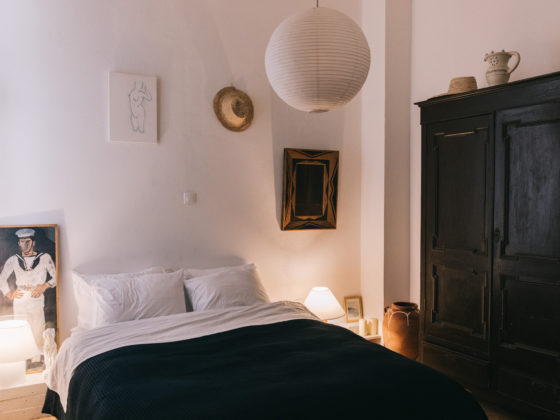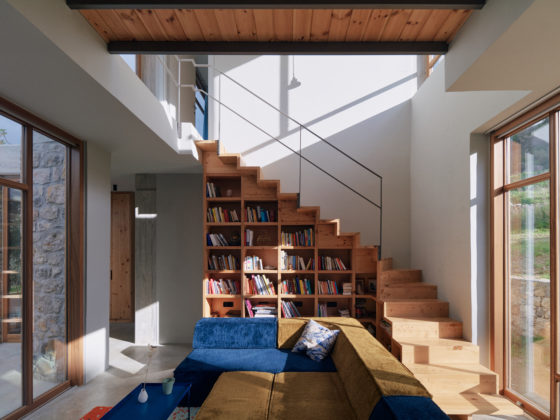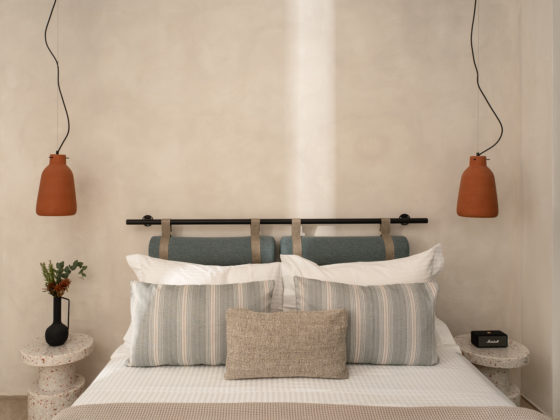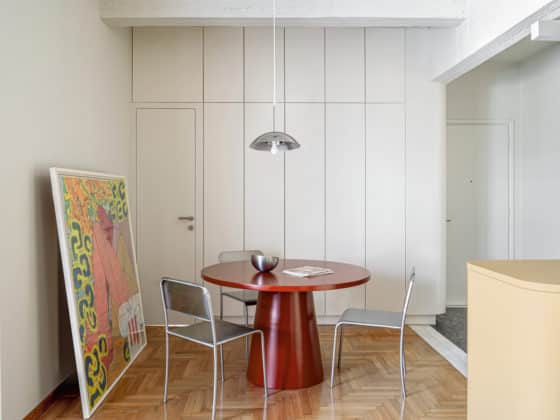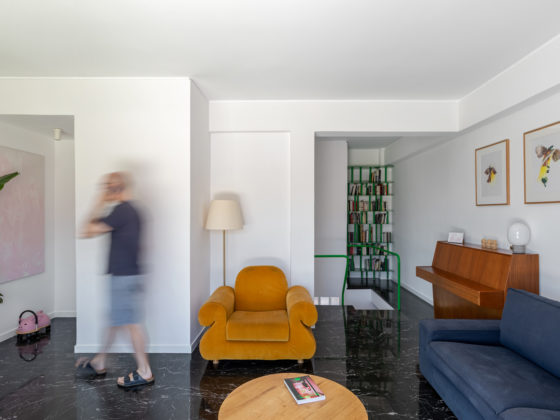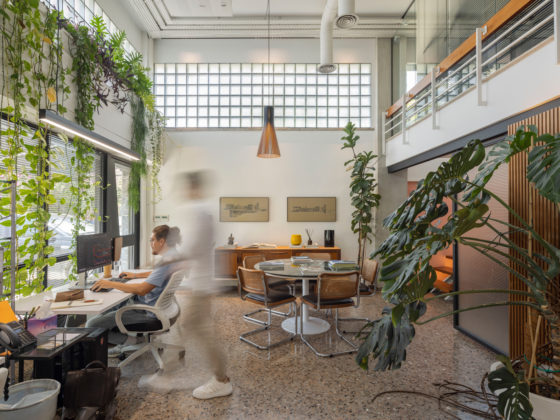The “Blue Apartment Building” (1933), “Ble Polykatoikia” or “Polykatoikia Antonopoulou” by the name of its initial owner -situated on the corner of Exarchia Square- is one of the most iconic buildings of Greek modernism and the one its creators are mostly known for.
Architect Kyriakoulis Panagiotakos designed it and painter Spyros Papaloukas asigned the colours, the buildings main body coloured in deep blue, thus giving the building its nickname. When in Athens during the CIAM IV conference in 1933, LeCorbusier visited the building and commented “c’ est tres beau”.
The apartment is located on the 4th floor, with its external walls slightly set back from the main buildings facade, thus creating a series of covered and uncovered outdoor spaces along its elevations. The main rooms expand along the external walls, while all secondary spaces are set at the back, looking at the internal common space (“akalyptos”) where a secondary service staircase is found.
The living spaces are positioned around the entrance hall, which Panagiotakos considered and designed as an important central space in all the apartments of the building. As Maro Kardamitsi-Adami notes in her book on the “Blue Polykatoikia” it is a reference to the central hall of the Athenian Neoclassical buildings. The main hall leads to the office, the dining room and the living room, which are also connected to each other, through wide three-part glass-paneled timber doors.
The apartment was renovated in 2019, by cadu architects. During a previous renovation of the apartment, about fifteen years ago, the original kitchen wardrobes had been replaced by new, the bathroom and WC were renovated and a fireplace was added in the living room.
Due to the apartment’s high architectural and historic value, as well as construction and material quality, the architects decided that the current intervention should be eliminated to the minimum required, based on two main principles. Record, survey and restore all original architectural elements and design small scale interventions to upgrade the functional and energy-saving aspect of the apartment.
The main intervention was the redesign of the kitchen, which was originally designed as a secondary space and its “opening”to the apartment, thus transforming it into a main vital space of the apartment. The new kitchen design was inspired by the original design and the architecture of the mid-war period, where the building belongs.
The large external openings with their timber sash-windows, shape much of the building distinctive external appearance. Entering the apartment one realizes that the windows are a very strong element of the inside as well. Every main space of the apartment has an external wall covered by openings. The sash-windows and their rolling shutters, initially designed with great detail, were recorded and then carefully restored and their energy behavior upgraded.
